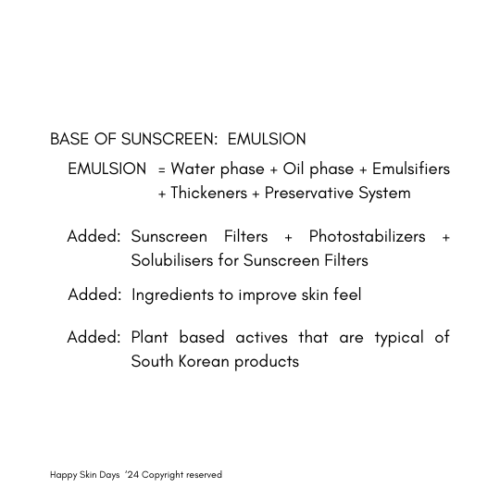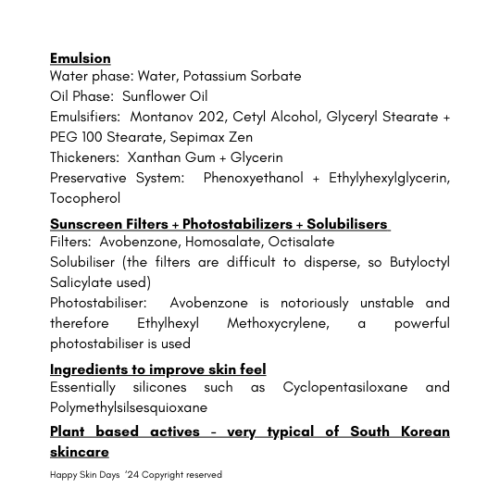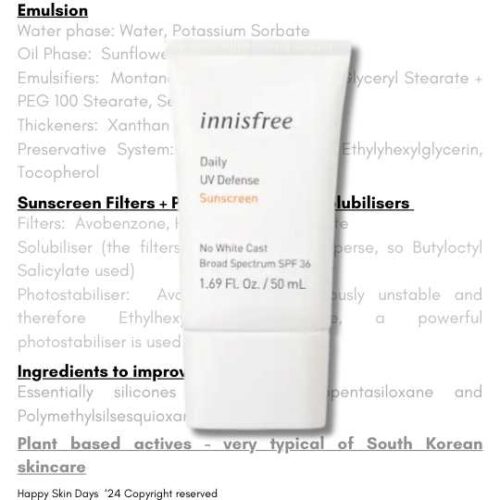Look who is back…
It is the most bizarre thing, that I have an increasingly unsuitable explanation for: I took what seems to be an eon of a break from regularly writing my blog. You see its an odd thing for me to do, because out of all the things that I absolutely love + (wrongly) think I cannot live without, writing is one of them.
Obviously, I have been doing other things (such as completely upskilling as a cosmetic formulator) because if I am going to speak with any authority about products, then I should be able to make my own products (AND) analyse the market WITHOUT having to buy this service.
I would feel like a fraud if I just private labelled products – ethics matter to me. I know, I would do terribly if I worked for Trump.
What am I going to be writing about?
I have noticed a plethora of new websites and a better informed consumer asking really detailed Qs about every ingredient that appears in an ingredient list.
Without doubt, that was me.
Websites that give an individual breakdown of ingredients are massively unhelpful because they fail to give context. Telling a consumer verbatim what an ingredient does is meaningless without the backdrop of a product’s structure. Therefore, it’s really important to present the formulator’s view of product creation because that’s just a huge gapping hole in consumer understanding.
The elephant in the room – AI and misinformation
Honestly, AI is going to be able to do what I an doing QUICKER – but not necessarily more accurately. At the moment, it certainly produces hogwash – but its only a matter of time before the table flips.
What next few blogs are about….
The purpose of the next series of blogs is to break down the ingredient list for consumers in a meaningful way – there will be gaps in my interpretation of formulation lists, but that’s ok – you’ll get the gist of it.
Yup, sunscreens…
I have decided to go with what I am most familiar with: sunscreens. I will be looking at the top 25 bestselling sunscreens on Sephora and a pharmacy chain to be decided. This is only possible because I am spending a short amount of time in the USA before returning to the 115F climate of the Middle East.
As always, feedback is most welcome: what should I leave out? What do you want to see more of?
Top selling sunscreen in the USA….
The No one bestselling sunscreen on Sephora USA as of 14th January ’24 is Innisfree Daily UV Defense.
Note that this is a formulation that Innisfree has made for the US market. Formulations sold in Asia are different because sunscreens use newer filters. (Innisfree SPF 35 and Innisfree SPF 50)
As sunscreens are OTC drugs in the USA, packaging discloses the % of UV filters in a product. In this sunscreen, The UVA filter is notoriously unstable Avobenzone at 2.5%, and the UVB filters are weak filters (Homosalate and Octisalate at 7% and 4.3%, respectively)
What type of protection does this product offer?
Avobenzone at 2.5% is a pretty decent amount to put in a sunscreen: typically Avobenzone is at 3%. Avobenzone provides the UVA protection. The reason why the SPF is low is both Homosalate and Octisalate are weak UVB filters.
What the formula actually is…


The formula is essentially an emulsion (which by necessity has an oil phase, water phase and an emulsifier (s) to bring together both phases into a uniform lotion). Emulsions will typically also have thickeners (which give more body to the product + stabilise it) and a preservative system.
Because sunscreen filters are difficult ingredients to work with, you’ll typically find additional solvents and/or dispersing agents, to get the sunscreen to uniformly mix through the emulsion. Secondly, filters like Avobenzone are extremely photounstable (start to breakdown as soon as they come out of a tube) and the product will need an additional stabiliser.
Finally, the product will inevitably have ingredients that improve skin feel and these are typically part of the silicone family.
As this is a South Korean product, it will also have plant based actives, which in sunscreens tend to be anti-inflammatory and/or anti-oxidants.
1) Water phase
Water and chelating agent Potassium Sorbate
2) Oil phase + Emulsifiers
- Sunflower seed oil
- Montanov 202 (Arachidyl Alcohol, Behenyl Alcohol, Arachidyl Alcohol)
- Cetyl Alcohol
- Glyceryl Stearate + PEG 100 Stearate,
- Sepimax Zen (Polyacrylate Crosspolymer-6)
3) Product Stabilisers: Xanthan Gum + Glycerin, Sepimax Zen
4) Botanical/Synthetic actives;
– Japanese Camellia Herbasol® Extract Glycerine Unpreserved (likely an anti-oxidant, anti-inflammatory function)
– Actiphyte™ witch hazel (anti-inflammatory)
– Actiphyte green tea (strong anti-oxidant)
– Water Soluble Centella Asiatica Extract (Good antibacterial effect that can be used to treat acne, reduce inflammation, improve + repair skin barrier function)
– DEFENSIL (anti-inflammatory)
– Black Orchid Extract (unsure of the function?)
– Advanced Portulaca Oleracea Extract (anti-inflammatory)
6) Preservatives: Euxyl PE 9010 (Phenoxyethanol and Ethylhexylglycerin)
7) Ingredients that improve the skin feel of the product: Silicones (Polymethylsilsesquioxane, Cyclopentasiloxane)
Source: Ultroprospector and Sephora, my brain.
This blog was made without Sam Altman’s creation – thank you very much for reading.
Full INCI list of trade names:
– Japanese Camellia Herbasol® Extract Glycerine Unpreserved (Glycerin (and) Water (and) Camellia Japonica Flower Extract)
– Actiphyte™ witch hazel (Glycerin (and) Hamamelis Virginiana (Witch Hazel) Leaf Extract (and) Water)
– Actiphyte green tea (Glycerin (and) Camellia Sinensis Leaf Extract (and) Water)
– Water Soluble Centella Asiatica Extract (Centella Asiatica Extract (and) Butylene Glycol)
– DEFENSIL (Octyldodecanol (and) Echium Plantagineum Seed Oil (and) Helianthus Annuus (Sunflower) Seed Oil Unsaponifiables (and) Cardiospermum Halicacabum Flower/Leaf/Vine Extract (and) Tocopherol)
– Black Orchid Extract (Water (and) Glycerin (and) Orchid Extract (and) Citric Acid (and) Sodium Benzoate (and) Potassium Sorbate)
– Advanced Portulaca Oleracea Extract (Propanediol (and) Water (and) Portulaca Oleracea Extract (and) Hexanediol)
– Montanov 202 (Arachidyl Alcohol, Behenyl Alcohol, Arachidyl Alcohol)
– Sepimax Zen (Polyacrylate Crosspolymer-6)
– Avobenzone (Butyl Methoxydibenzoylmethane)
Full ingredient list from Sephora USA website
Avobenzone 2.5%, Homosalate 7%, and Octisalate 4.3%
Water / Aqua / Eau, Butylene Glycol, Cyclopentasiloxane, Butyloctyl Salicylate, Ethylhexyl Methoxycrylene, Arachidyl Alcohol, Behenyl Alcohol, Glyceryl Stearate, Peg-100 Stearate, 1,2-Hexanediol, Polymethylsilsesquioxane, Cetyl Alcohol, Arachidyl Glucoside, Phenoxyethanol, Propanediol, Polyacrylate Crosspolymer-6, Octyldodecanol, Fragrance / Parfum, Xanthan Gum, Centella Asiatica Extract, Portulaca Oleracea Extract, Echium Plantagineum Seed Oil, T-Butyl Alcohol, Camellia Sinensis Leaf Extract, Ethylhexylglycerin, Helianthus Annuus (Sunflower) Seed Oil Unsaponifiables, Cardiospermum Halicacabum Flower/Leaf/Vine Extract, Tocopherol, Helianthus Annuus (Sunflower) Seed Oil, Glycerin, Hamamelis Virginiana (Witch Hazel) Leaf Extract, Citrus Unshiu Peel Extract, Opuntia Coccinellifera Fruit Extract, Orchid Extract, Camellia Japonica Leaf Extract, Citric Acid, Sodium Benzoate, Potassium Sorbate.
